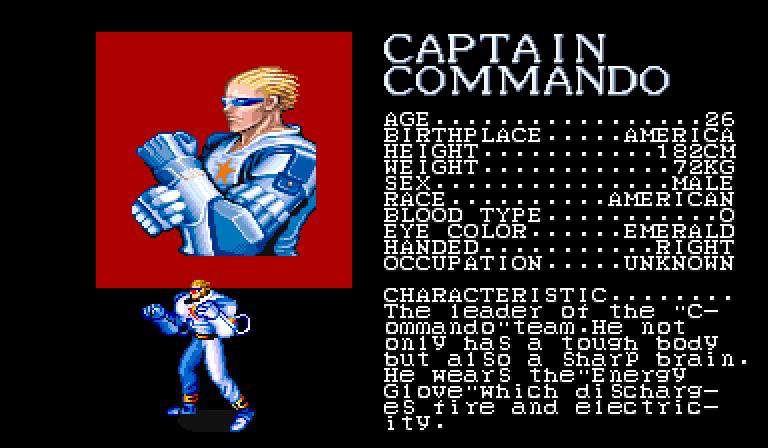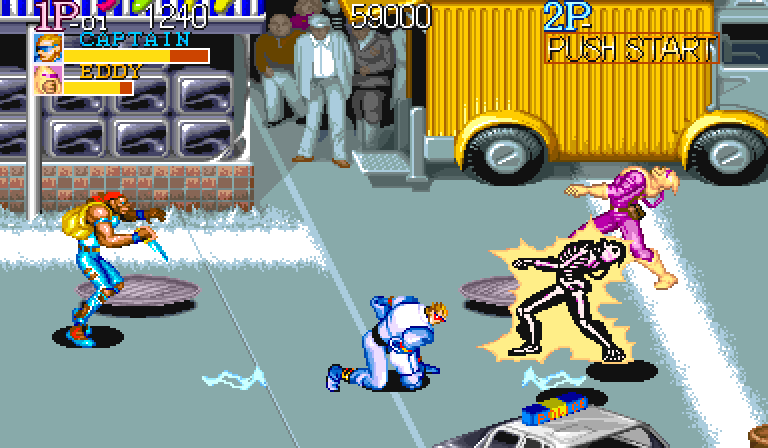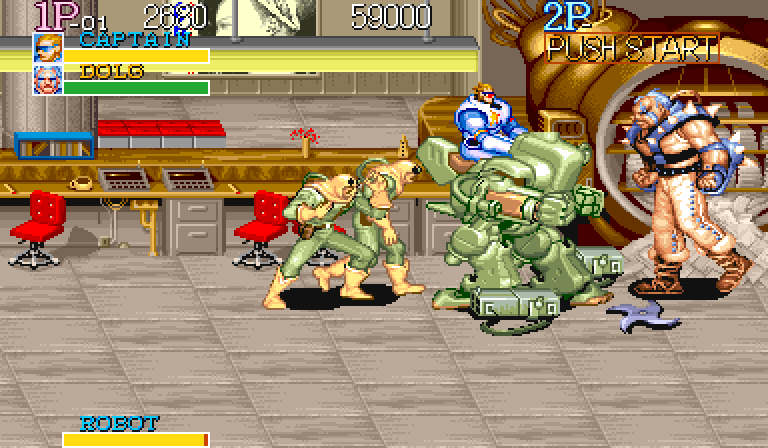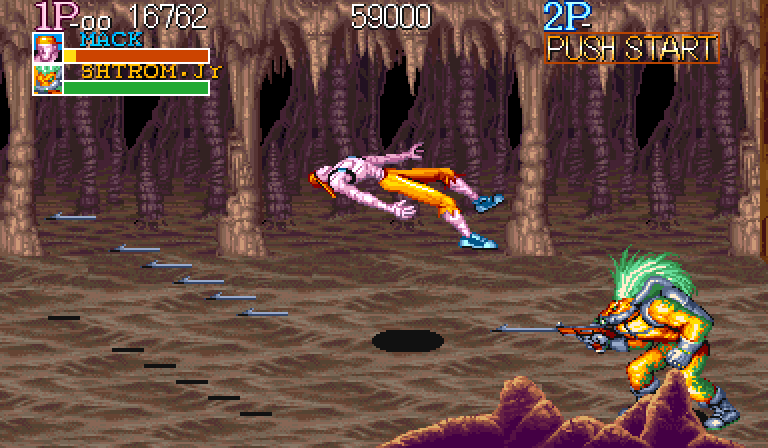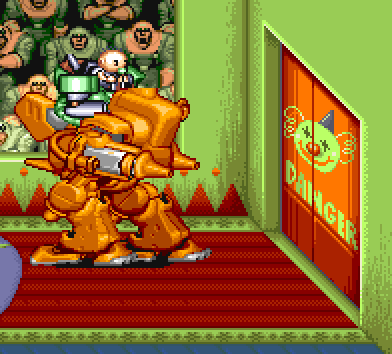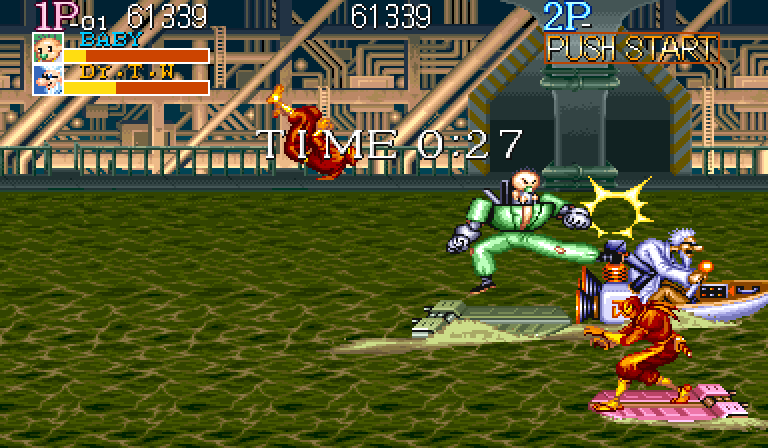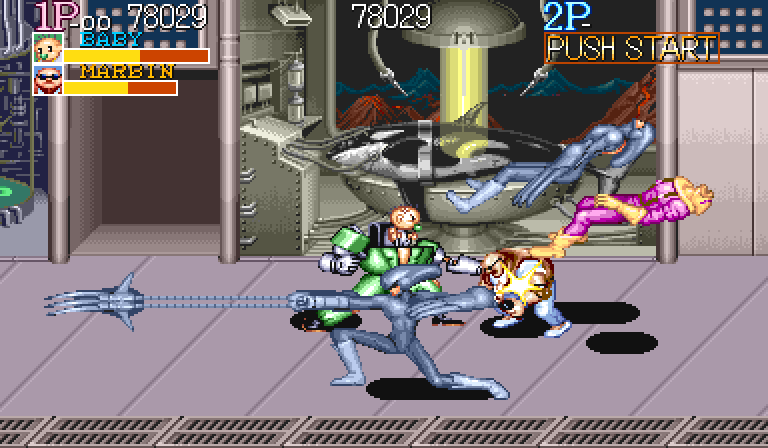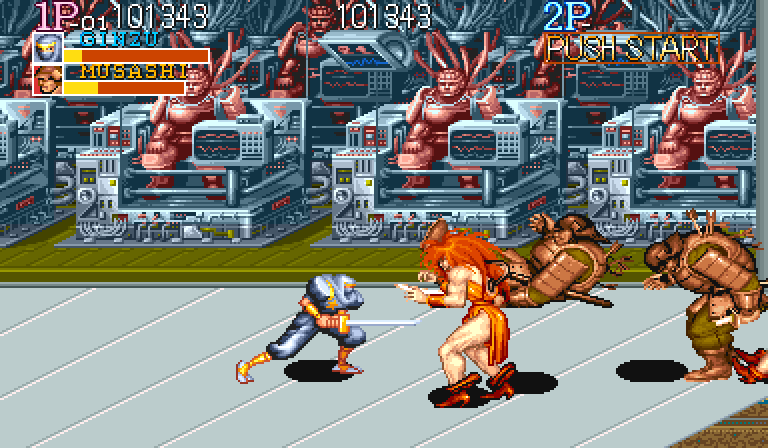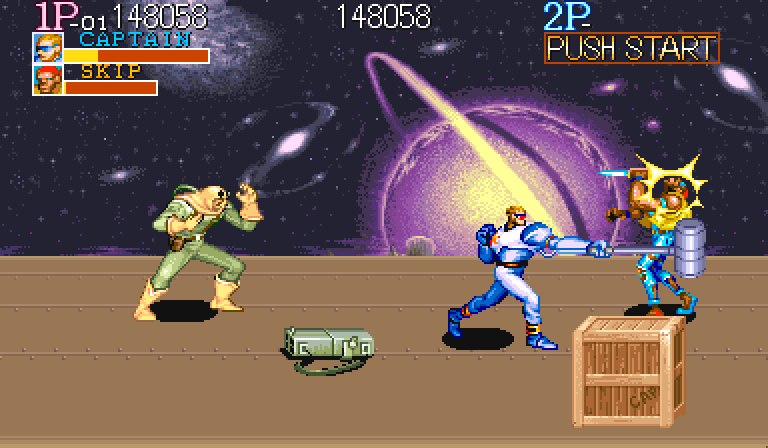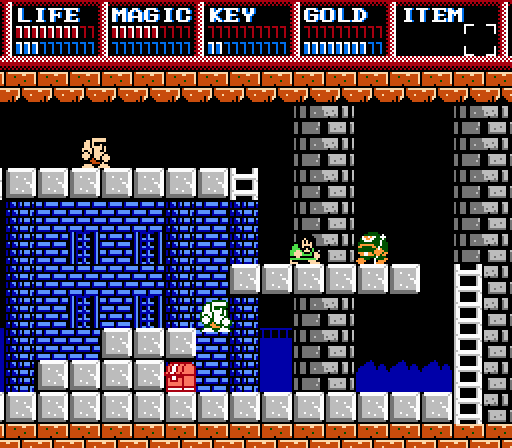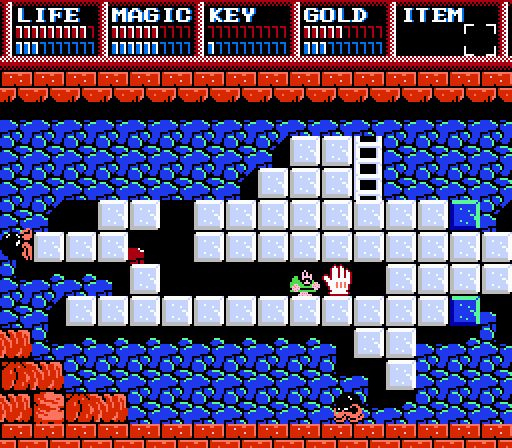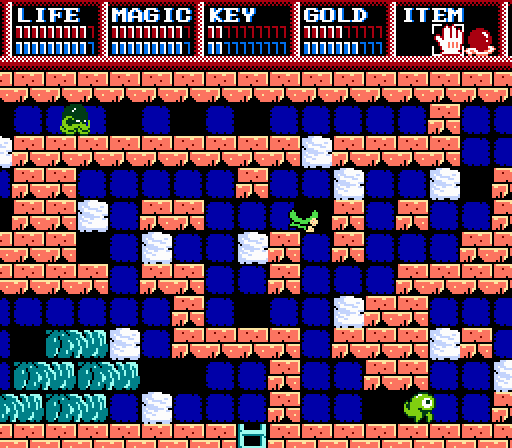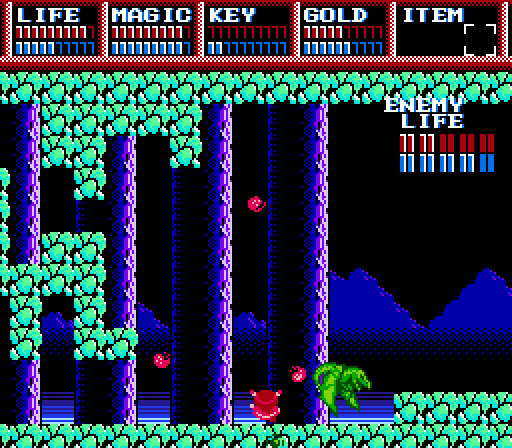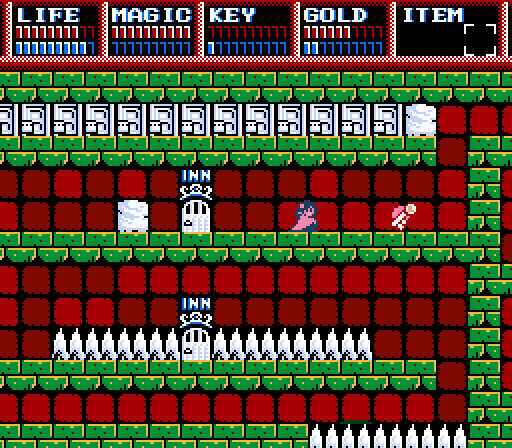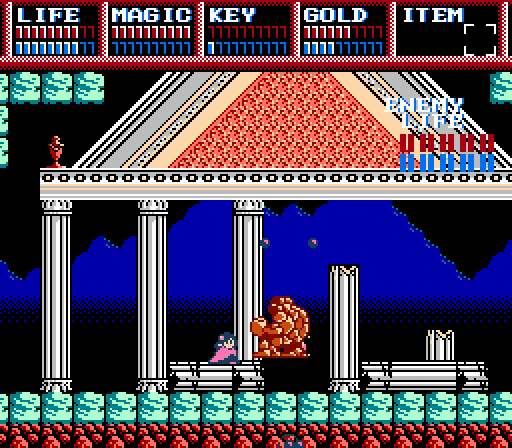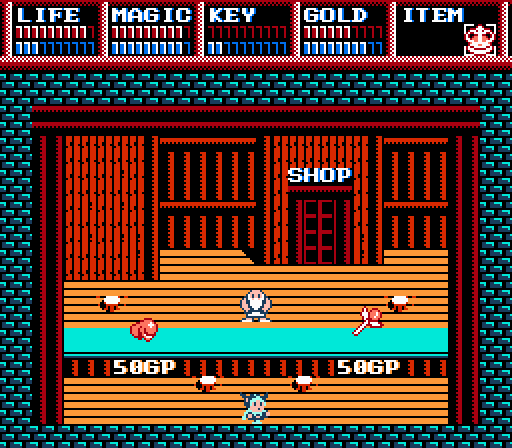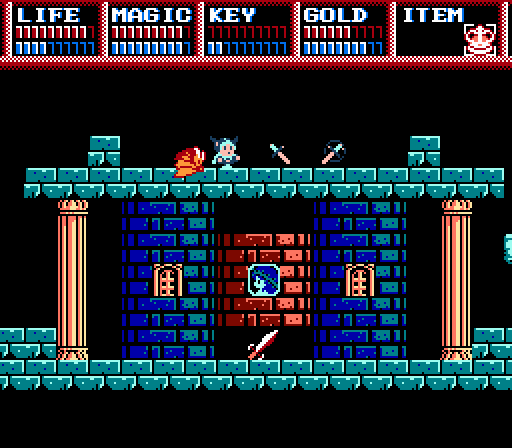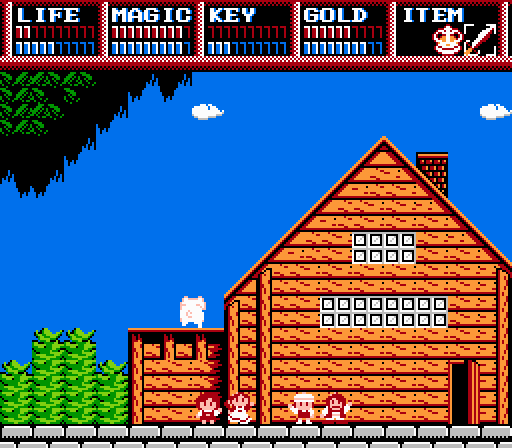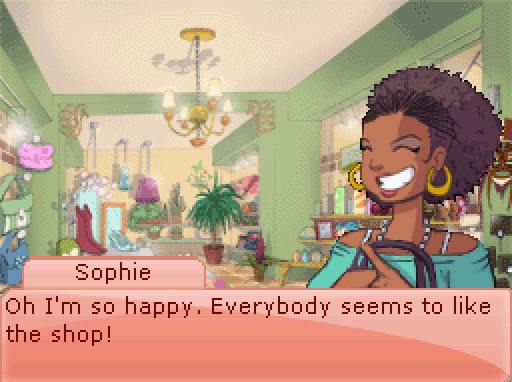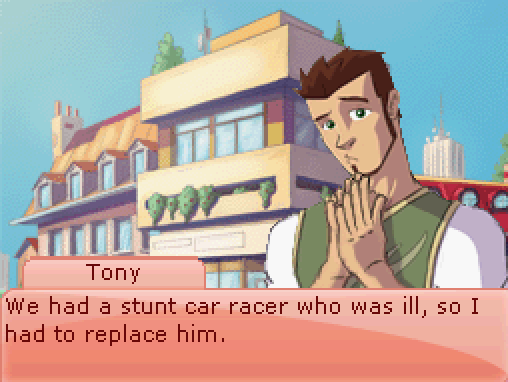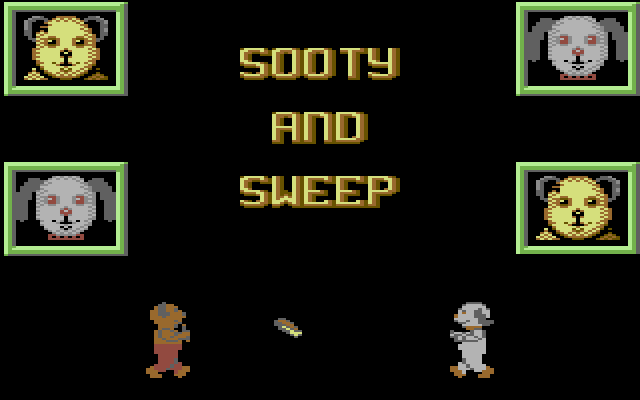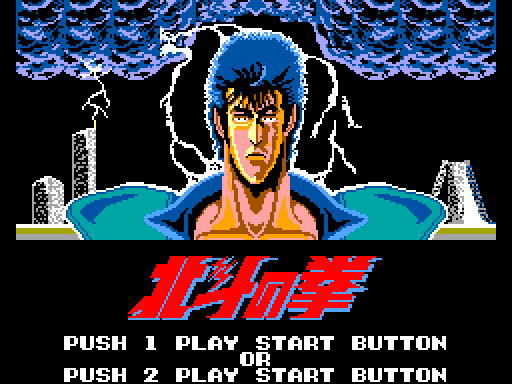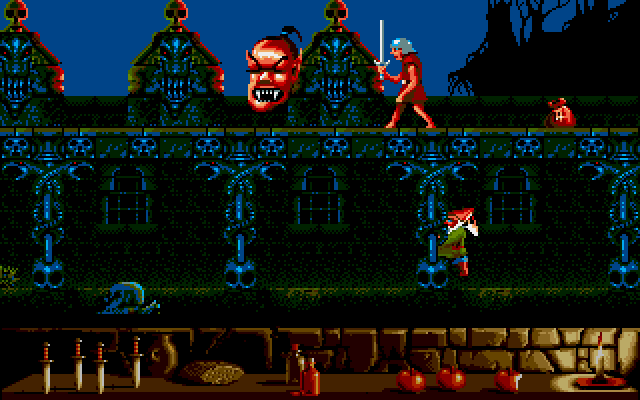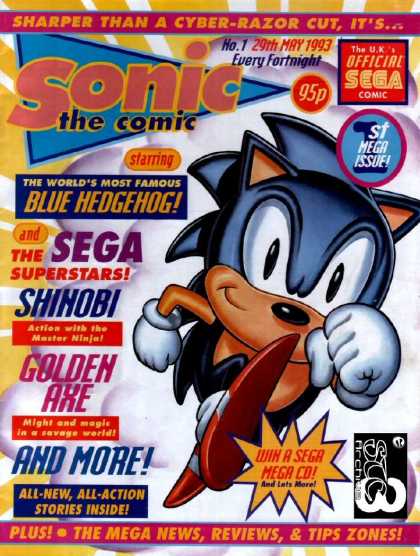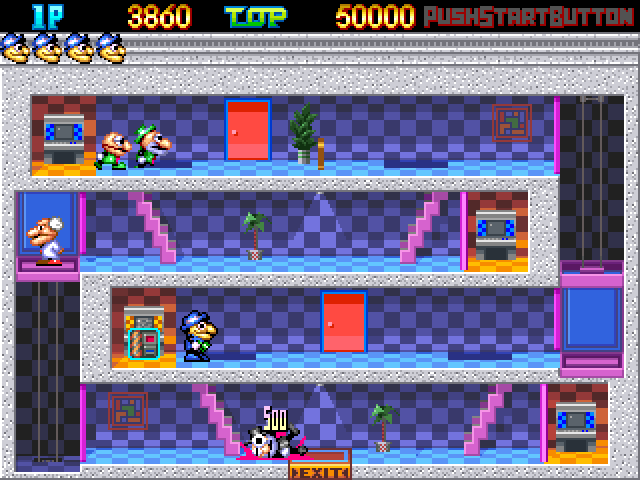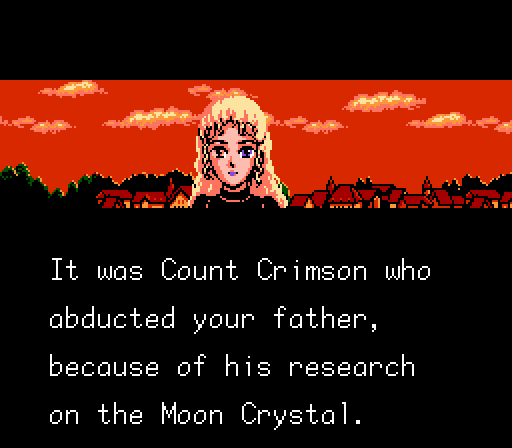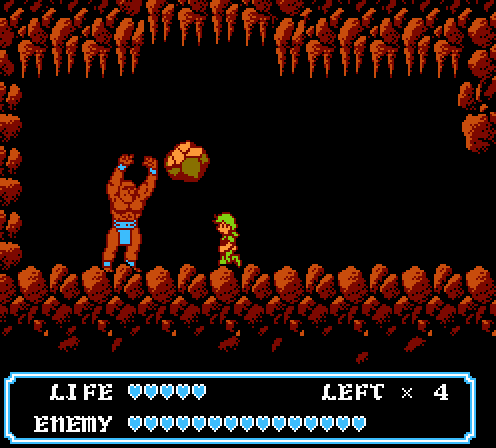Today I'll be writing about a low-effort, licensed Game Boy platformer based on a property that I actually like because apparently my life requires more misery and that misery should be monochrome and tedious. The game in question? Imagineering's 1992 Nickelodeon-em-up The Ren and Stimpy Show: Space Cadet Adventures!
Not that the game ever uses the subtitle Space Cadet Adventures, referring to itself only as The Ren and Stimpy Show, which is a bit strange. I know the Game Boy isn't blessed with an overabundance of resolution but I'm sure you could have squeezed the subtitle - you know, the thing that tells potential players what kind of adventures Ren and Stimpy are going to be having - in there somewhere. Also unusual is the way the gameplay just starts when you turn the cartridge on, without waiting for any input from the player. It's not a game overloaded with an excess of pointless options and configuration settings, then.
For those of you who don't know, The Ren and Stimpy Show was a Nickelodeon cartoon about the frequently abusive and very occasionally touching relationship between Ren Hoek, a paranoid, psychotic chihuahua and his friend / life partner / punchbag Stimpson J. Cat, who is a cat. A really, really stupid cat. The general course of any given Ren and Stimpy episode involves Stimpy doing something stupid and Ren beating the crap out of him. It's not necessarily what you'd call a "kid's" cartoon. Space Cadet Adventures is specifically based on the "outer space" episodes of Ren and Stimpy, where Captain Ren and Cadet Stimpy travel the universe in the amazing year 400 billion, getting sucked through black holes and succumbing to space madness, that kind of thing.
The game begins with Captain Ren on a spacewalk, cooking sausages for dinner in the merciless vacuum of space. Well, it stops the ship filling up with that horrible greasy smell, you know? If you're wondering how he's managed to get a fire going in an oxygen-free environment, don't. It's not worth it.
With dinner cooked, Ren just needs Stimpy to open the ship's hatch so he can get back inside.
Of course, Stimpy is so incredibly stupid that he presses the "Cut Lifeline" button instead of the one marked "Open Hatch." This strikes at the very heart of Ren and Stimpy's dynamic, because while Stimpy's incompetence means that Ren is left drifting in space Ren has no-one to blame but himself. He knows that Stimpy cannot perform even the most basic of tasks, and yet he continues to put his trust in his dumb cat friend. His frequent anger at Stimpy is really misdirected rage that he feels towards himself.
And so, with Ren floating in the background where he looks a bit like E.T.'s sprite from his Atari 2600 adventure, Stimpy sets off on a journey to the other side of the ship. It's a journey fraught with danger because despite being nigh-indestructible in the cartoon this version of Stimpy dies in a single hit and everything's out to kill him. Patches of unidentified goo on the floor? Immediately fatal. The soundwaves emanating from a ringing alarm? Deadlier than a shark with a hand grenade, because at least that would give you some time to escape as the shark struggles to remove the grenade's pin with his flippers. Most menacing of all, however, are the plethora of buttons that litter the stage.
Yes, buttons. Horrible, murderous buttons, or at least they are when they're in the "depressed" or "not blinking" phases of their constant on-and-off movements, as so it becomes clear very early on that despite nominally being a platformer Space Cadet Adventures is more of a stop-n-go kind of experience, with plenty of waiting around for the hazards of the stage to align in such a way that you can safely walk past them. Having tried out some jumping, I am okay with this. Stimpy's jumps are very slow and floaty, something I am going to graciously put down to the game being set in a low gravity situation and not incompetent programming, and the less I have to use them the better.
There are some enemies, like these scuttling robots, that can be defeated in a more traditional videogame manner than waiting for them to turn off and walking past them. Stimpy has a projectile attack that can deal them them, and that projectile is a hairball that he pukes up with great velocity, which is the most disgusting projectile this side of an animal sanctuary for elderly, incontinent chimpanzees.
Oh look, it's Log! That's a thing that was actually in The Ren and Stimpy cartoon, right? It has no reason to be here and does nothing but gently bob up and down, but it was in the show so you will enjoy its presence. Okay, that is perhaps a trifle harsh on the game's developers, because they have made some effort to give the game a familiar Ren and Stimpy feel by including many graphical touches taken directly from the show - the three-person spacesuit from the "Space Madness" episode shows up as an enemy, the glowing electric pylons from the background of the same episode appear as environmental hazards - but it all feels a little bolted-on and certainly does nothing to improve the gameplay, which is as unimaginative and soporific as these screenshots suggest.
And yet, despite the simplicity of Space Cadet Adventures, I managed to get stuck on the first stage. This was not because it's difficult to move without taking damage from the many obstacles that are lurking just off-screen (although it is) but because I couldn't tell what the hell are solid, stand-on-able platforms and what is mere background illustration. It took me way longer than it should have to escape the platform pictured above, because I didn't realise that there are in fact a plethora of viable platforms nearby. Those small black windows? Stimpy can stand on those. The line graphs? He can stand on those too. The tiny circles that look like nothing more than rivets holding this ship together? Yes, he can even perch atop those, somehow. It's a good job I accidentally landed on one of them while trying to climb upwards otherwise I doubt I would have ever figured out that they can take Stimpy's considerable weight.
Eventually I made it outside the ship, and suddenly the gameplay is timed - I've got thirty seconds get from one end of the stage to the other, despite the rest of the game thus far being very much a laid-back, no-need-to-hurry affair. If you don't make it in time, or if Stimpy is killed by the pummelling rain of space debris, then you're sent right back to the start of the game. Luckily I had collected enough Powdered Toast to give me a full health bar, and so I ignored any and all obstacles, relying on the temporary invincibility granted by taking damage to see me through to the end. You might call it cheating, but it also feels in-character for Stimpy. That's my excuse, and I'm sticking with it.
Always one to look on the bright side, I will admit that Space Cadet Adventures has some good artwork in these between-stage cutscenes. That is recognisably Ren Hoek. I'm happy with that, although it is making me wish Imagineering has just made this whole game a graphic adventure of some sort, more nice pixel portraits and less sluggish platforming would have been fine by me. Play to your strengths, that kind of thing.
Anyway, Ren is safe, because rage is just as effective at sustaining him as oxygen, but he'd like to get back into the (relative) safety of the ship. Unfortunately Stimpy lets go of him while he's opening the hatch, and so Ren floats back out into space.
It's okay, though, because he lands unharmed on an alien planet. We're playing as Ren now, and he's functionally identical to Stimpy with the small difference that Stimpy's long-ranged hairball projectile has been replaced by a short-range and almost entirely useless slap. That's a surprisingly deep bit of commentary on Ren's anger issues, really: his first impulse is always to physically beat his problems into submission, but his fury overcomes his better judgement and gets him into trouble. It's much better to stay calm and avoid confrontation. like here where you can simply jump over the alien thing without trying to slap it. Hold on, I recognise that alien thing...
I'm fairly sure it's supposed to be one of these three-eye, tentacle-mouthed space-brains from the "Marooned" episode of The Ren and Stimpy Show. In the cartoon they're huge and disturbingly, well, alien creatures that shove Ren and Stimpy into their brain-sacs, where they are presumably killed by the brain alien's internal fauna of bacteria and antibodies and such. I've always found them to be one of Ren and Stimpy's most unsettling moments, and that's saying something given how weird the show is, so it's a shame to see them here reduced to the threat level - and the appearance - of a cabbage slowly rolling along the ground.
They're still the most exciting thing about this stage, mind you. It seems the developers decided that the platforming action of stage one was so intensely thrilling that it put the player at risk of a deadly cardiac event caused by sheer, unadulterated fun, so to balance things out they got rid of all the platforming from Ren's stage and just had him plod forwards across a mostly flat plain. They did it for you, don't you understand? Why, if you'd had to avoid the cabbage-brains and jump between two moving rocks, the consequences could have been catastrophic!
Then, shockingly, I found something slightly out of the ordinary! If you collect enough cans of Powdered Toast (as opposed to the pieces of Powdered Toast that restore your health) and stand in front of one of the television sets dotted throughout the stages, you'll be whisked away to the magical world of Muddy Mudskipper, television star and weird half-fish freak of evolution! Muddy Mudskipper has a game for you to play - he flips three coins, and you have to guess if they'll land heads or tails. Guess correctly twice and you're made invincible for a while. Guess right three times and you're made invincible for a slightly longer while! It's a very useful prize, useful enough that I can forgive Muddy for calling me a lousy bum without even taking the time to get to know me.
There's a change of scenery, if not a change of gameplay, later in the stage when Ren finds himself inside a living creature. I bring it up chiefly to show you the bizarre slug creature that Ren is jumping over in the screenshot above. It's expression made me laugh, is all, and laughter should be shared with the world. In a kid's animated movie about household appliances that are magically brought to life, that is the look of a living vacuum cleaner who has just realised that the only reason for its existence is to suck up other people's filth. "It's a living," croaks Herbert the Hoover, his throat clogged with shed skin cells and pet dander.
Having guided Ren back to his spaceship, said ship is immediately engulfed by another space ship that looks like a giant toilet. I'm undecided about whether to go with a "Klingon" joke. I think it might be too subtle for a game featuring the S.S. Flush, a giant spacefaring toilet.
The inside of the ship is also appointed in a lavatorial motif, and Stimpy must negotiate deadly bog roll avalanches and plunger-hurling aliens in his quest to find Ren who was totally here a minute ago, I swear. It's more of the same platforming action as the first stage, with two noticeable improvements: it's a lot easier to tell what is and what isn't an actual platform, and it's shorter. Much shorter, and as the game progresses the stages get shorter still, as though the developers have become just as fed up of the whole affair as I have and we're equally keen for Space Cadet Adventures to be over already.
I think I've made it fairly clear thus far that The Ren and Stimpy Show: Space Cadet Adventures is not a good game, but for a moment I thought maybe I was being too harsh on it. I'm not in a great mood, and maybe that was being reflected in the way I was approaching this game, but then I got deeper into the S.S. Flush stage and no, I was right, it's just bad. You know that thing games sometimes do where you keep repeating the same section over and over again until you go through it in the right order or take the correct path, like the Lost Woods in Ocarina of Time or the looping castle in Super Mario Bros.? I thought Space Cadet Adventures was doing that, but it turned out the same arrangement of platforms was just copy-pasted a few times to pad things out. I think my original "bad game" assessment is going to hold up to scrutiny after all.
I found Ren at the end of another timed stage. He's been grabbed by a tentacle. That probably would have been more interesting to see than watching Stimpy fight his way through the bathroom section of B&Q, but what do I know? I'm not a videogame designer.
Reunited and then once again separated moments later, Ren and Stimpy float down to another planet for the final stage - the Asteroid City Trailer Park.
It's back to playing as Ren, which means this gun-toting alien is gettin' slapped even if it costs Ren some health in the process - which it does, because you have to be standing so close to an enemy that you're practically sharing internal organs before your slap will reach them. The poor creature was only defending its trailer-park home. If I saw a talking, psychotic chihuahua fall from the sky I'd probably reach from my astro-shotgun too.
Graphically this stage isn't bad at all, and the futuristic squalor of an intergalactic trailer park makes for an interesting setting, but it's just not very Ren and Stimpy. This is Ren and Stimpy's curse, both the cartoon and the videogames based on it: no-one ever seemed sure what to make of it. I dimly recall when Ren and Stimpy was first shown on the BBC it was presented as being an "adult" animation akin to The Simpsons, despite those shows being as different as Cheers and the violent hallucinations of a madman, and when it came time to make videogames based on the series no-one seemed to know the best way to capture Ren and Stimpy's surreal energy. In practise this resulted (as was almost always the case with licensed cartoon tie-ins) in a string of generic platformers, a category into which Space Cadet Adventures fits comfortably. Would it even be possible to make a good Ren and Stimpy game? I mentioned graphic adventures before, and a Sam and Max-inspired interactive cartoon feels like it could have had the best chance of success, but it would still be difficult when the characters don't have any easily game-ifiable characteristics and the show itself never stuck to one consistent theme.
The game ends with another timed stage featuring some of the blandest, least engaging ledge-hopping I've ever participated in, a bold experiment in redefining the word "game" to mean something closer to "chore." In the great gamut of videogaming experiences, this is the supermarket own-brand, the budget label, the kind of gameplay you'd expect to find in a plain white no-frills box with no markings other than the word "platforming" crudely stencilled on the side. You jump up from platform to platform against a plain grey backdrop. Some of the platforms fall down. This is the climax of the game, then, and it's less involved than the first twenty seconds of Super Mario Bros.
It turns out that Ren has just climbed up a gargantuan tower of cat litter. Stimpy is already at the top, eating said cat litter. It is a fitting finale for a game that has mostly been an unpleasant grey sludge dotted with the occasional piece of shit.
With an eloquence that I cannot match, Ren's expression implies that he enjoyed the experience even less than I did. At least it was short, and it really did keep getting shorter as it went on - maybe I was just more gung-ho towards the end and rushed though the final areas, but I'd swear that the final stage is only a third of the length of the first stage.
The game ends, as Ren and Stimpy so often does, with Ren slapping Stimpy in the face, and I'm left to reflect on a gameplay experience with all the vibrancy and charm of a cinderblock. The thing is, it's not even a bad enough game to get really upset about, although you'd definitely be feeling pretty miffed if you'd paid full retail price for it. The controls are slow and sticky, but I've definitely suffered through worse, and there are no bafflingly awful gameplay mechanics to deal with. Space Cadet Adventures' problems lie with it's complete lack of imagination, resulting in a dry fart of a game that wafts by without leaving any impression on the player aside from maybe a disgruntled wrinkling of the nose. I'd love to recommend a different Ren and Stimpy game to you, but from what I can remember they're all kinda naff so stick to watching the cartoon or, at a stretch, start your own collection of magic nose goblins.






















































